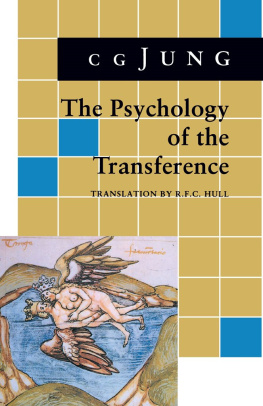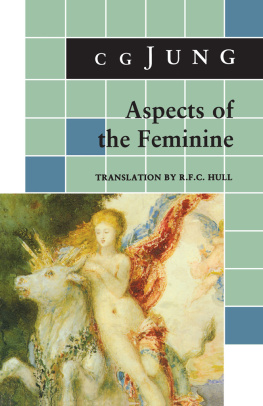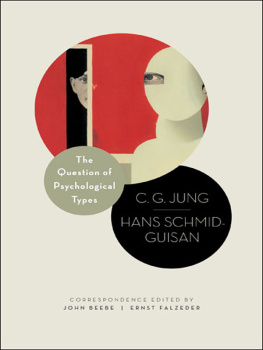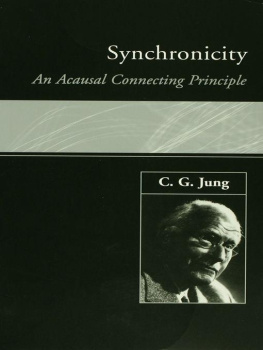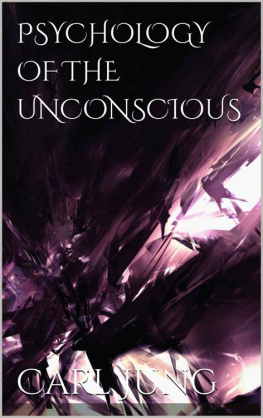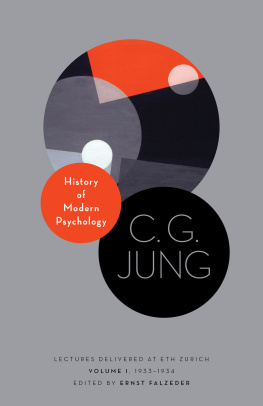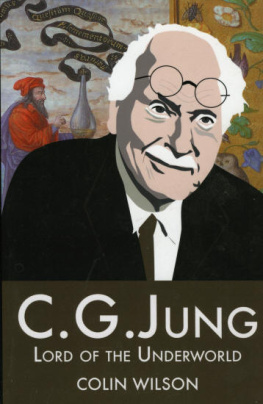C. G. Jung - The Psychology of The Transference
Here you can read online C. G. Jung - The Psychology of The Transference full text of the book (entire story) in english for free. Download pdf and epub, get meaning, cover and reviews about this ebook. year: 2020, publisher: Princeton University Press, genre: Science. Description of the work, (preface) as well as reviews are available. Best literature library LitArk.com created for fans of good reading and offers a wide selection of genres:
Romance novel
Science fiction
Adventure
Detective
Science
History
Home and family
Prose
Art
Politics
Computer
Non-fiction
Religion
Business
Children
Humor
Choose a favorite category and find really read worthwhile books. Enjoy immersion in the world of imagination, feel the emotions of the characters or learn something new for yourself, make an fascinating discovery.
The Psychology of The Transference: summary, description and annotation
We offer to read an annotation, description, summary or preface (depends on what the author of the book "The Psychology of The Transference" wrote himself). If you haven't found the necessary information about the book — write in the comments, we will try to find it.
The Psychology of The Transference — read online for free the complete book (whole text) full work
Below is the text of the book, divided by pages. System saving the place of the last page read, allows you to conveniently read the book "The Psychology of The Transference" online for free, without having to search again every time where you left off. Put a bookmark, and you can go to the page where you finished reading at any time.
Font size:
Interval:
Bookmark:

THE PSYCHOLOGY
OF THE TRANSFERENCE

from
The Collected Works of C. G. Jung
VOLUME 16
BOLLINGEN SERIES XX
THE PSYCHOLOGY
OF
THE TRANSFERENCE
C. G. JUNG
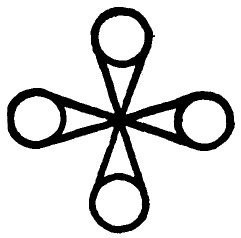
TRANSLATED BY R. F. C. HULL
BOLLINGEN SERIES

PRINCETON UNIVERSITY PRESS
COPYRIGHT 1954 BY BOLLINGEN FOUNDATION INC., NEW YORK, N.Y. NEW MATERIAL COPYRIGHT 1966 BY BOLLINGEN FOUNDATION PUBLISHED BY PRINCETON UNIVERSITY PRESS, PRINCETON, N.J.
Extracted from The Practice of Psychotherapy, Vol. 16 of the Collected Works of C. G. Jung (second edition, 1966). All the volumes comprising the Collected Works constitute number XX in Bollingen Series, under the editorship of Herbert Read, Michael Fordham, and Gerhard Adler; executive editor, William McGuire.
FIRST PRINCETON / BOLLINGEN PAPERBACK PRINTING, 1969
Third Printing, 1974
Tenth Printing, 1992
LIBRARY OF CONGRESS CARD NUMBER: 72-6530
ISBN 0-691-01752-2
16 15 14
ISBN-13: 978-0-691-01752-5 (pbk.)
ISBN-10: 0-691-01752-2 (pbk.)
ISBN-13: 978-0-691-21840-3
R0
TO MY WIFE
EDITORIAL NOTE
C. G. Jung first published this work in book form as Die Psychologic der Uebertragung (Zurich: Rascher, 1946), and the present translation first appeared in Volume 16 of the Collected Works in 1954, together with eleven shorter papers on general and specific problems of psychotherapy. For the second edition, in 1966, the translation was extensively reworked and the footnotes and bibliography were corrected and brought up to date, taking into account the subsequent publication of nearly all of Jungs writings in the English edition.
In 1958 Volume 16, with the title Praxis der Psychotherapie, was the first volume to appear in the Swiss collected edition. In a foreword that Jung specially wrote for that volume he described The Psychology of the Transference as an historical study of a phenomenon that may be regarded as the crux, or at any rate the crucial experience, in any thorough-going analysisthe problem of the transference, whose central importance was recognized long ago by Freud. This question is of such scope, and so difficult to elucidate in all its aspects, that a deeper investigation of its historical antecedents could not be avoided.
Naturally, if an historical study like this is seen in isolation from my later writings, the unprepared reader will have some difficulty in recognizing its connection with his conception of what psychotherapy should be. Psychotherapeutic practice and the historical approach will seem to him to be two incommensurable things. In psychological reality, however, this is not the case at all, for we are constantly coming upon phenomena that reveal their historical character as soon as their causality is examined a little more closely. Psychic modes of behaviour are, indeed, of an eminently historical nature. The psychotherapist has to acquaint himself not only with the personal biography of his patient, but also with the mental and spiritual assumptions prevalent in his milieu, both present and past, where traditional and cultural influences play a part and often a decisive one.
For example, no psychotherapist who seriously endeavours to understand the whole man is spared the task of learning the language of dreams and their symbolism. As with every language, historical knowledge is needed in order to understand it properly. This is particularly so since it is not an everyday language, but a symbolic language that makes frequent use of age-old forms of expression. A knowledge of these enables the analyst to extricate his patient from the oppressive constriction of a purely personalistic understanding of himself, and to release him from the egocentric prison that cuts him off from the wide horizon of his further social, moral, and spiritual development.
*
The paragraph numbers of the collected edition have been retained to facilitate reference, and some essential corrections have been made. The bibliography of Volume 16 is reproduced in full, inasmuch as only a few of its entries do not apply to The Psychology of the Transference, and a new index has been prepared.
LIST OF ILLUSTRATIONS
.
. following
FOREWORD
Everyone who has had practical experience of psychotherapy knows that the process which Freud called transference often presents a difficult problem. It is probably no exaggeration to say that almost all cases requiring lengthy treatment gravitate round the phenomenon of transference, and that the success or failure of the treatment appears to be bound up with it in a very fundamental way. Psychology, therefore, cannot very well overlook or avoid this problem, nor should the psychotherapist pretend that the so-called resolution of the transference is just a matter of course. We meet with a similar optimism in the treatment of sublimation, a process closely connected with the transference. In discussing these phenomena, people often talk as though they could be dealt with by reason, or by intelligence and will, or could be remedied by the ingenuity and art of a doctor armed with superior technique. This euphemistic and propitiatory approach is useful enough when the situation is not exactly simple and no easy results are to be had; but it has the disadvantage of disguising the difficulty of the problem and thus preventing or postponing deeper investigation. Although I originally agreed with Freud that the importance of the transference could hardly be overestimated, increasing experience has forced me to realize that its importance is relative. The transference is like those medicines which are a panacea for one and pure poison for another. In one case its appearance denotes a change for the better, in another it is a hindrance and an aggravation, if not a change for the worse, and in a third it is relatively unimportant. Generally speaking, however, it is a critical phenomenon of varying shades of meaning and its absence is as significant as its presence.
In this book I am concerned with the classical form of transference and its phenomenology. As it is a form of relationship, it always implies a vis--vis. Where it is negative or not there at all, the vis--vis plays an unimportant part, as is generally the case, for instance, when there is an inferiority complex coupled with a compensating need for self-assertion.
It may seem strange to the reader that, in order to throw light on the transference, I should turn to something so apparently remote as alchemical symbolism. But anyone who has read my book Psychology and Alchemy will know what close connections exist between alchemy and those phenomena which must, for practical reasons, be considered in the psychology of the unconscious. Consequently he will not be surprised to learn that this phenomenon, shown by experience to be so frequent and so important, also has its place in the symbolism and imagery of alchemy. Such images are not likely to be conscious representations of the transference relationship; rather, they unconsciously take that relationship for granted, and for this reason we may use them as an Ariadne thread to guide us in our argument.
Font size:
Interval:
Bookmark:
Similar books «The Psychology of The Transference»
Look at similar books to The Psychology of The Transference. We have selected literature similar in name and meaning in the hope of providing readers with more options to find new, interesting, not yet read works.
Discussion, reviews of the book The Psychology of The Transference and just readers' own opinions. Leave your comments, write what you think about the work, its meaning or the main characters. Specify what exactly you liked and what you didn't like, and why you think so.

